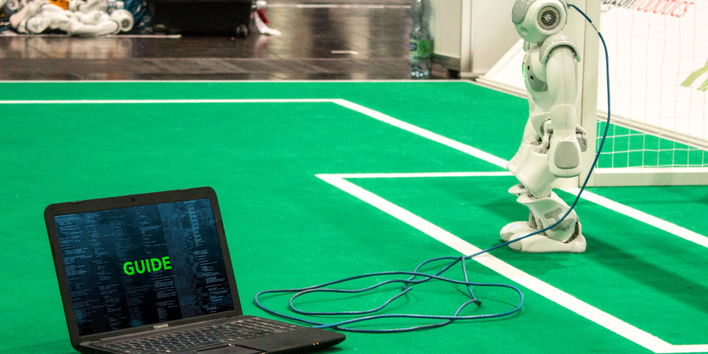Hey, have you heard the news? Generative AI is taking over the world and is here to stay!
"According to Tractica, the market for AI software, hardware and services is expected to skyrocket from $644 million in 2016 to a whopping $37.3 billion by 2025."
The possibilities are endless for AI, and as technology continues to evolve and take new shapes, it can be challenging for businesses to keep up.
Feeling overwhelmed? Not to worry.
In this guide, we will break down one exciting application of Ai, Generative Ai, with use cases and future projections to help you determine whether to implement it in your business.
So, whether you're a tech enthusiast or simply curious about the future of AI, we're here to keep you up to date on the latest trends and technologies to make your business successful in the digital age.
What is Generative AI?
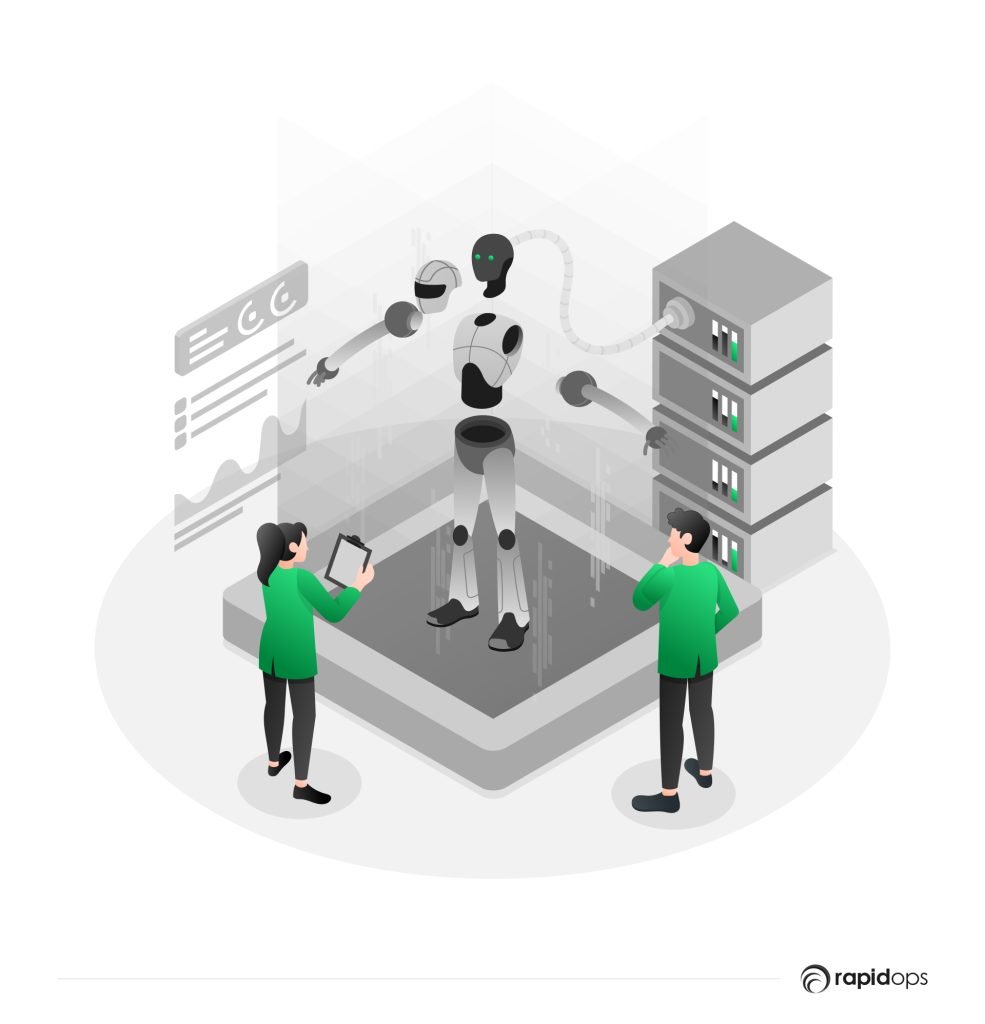
Generative AI refers to a class of artificial intelligence algorithms designed to generate new content, whether images, text, music or some other type of media.
These algorithms learn patterns and structures from existing data and then use that knowledge to generate new, previously unseen examples similar in style or content to the original data.
These algorithms have been used for many applications, including creating realistic images, writing poetry and fiction, composing music, and generating code.
Generative AI has come a long way in recent years. Here are three fundamental algorithms that have helped shape Generative AI into what it is today:
1. Generative Adversarial Networks (GANs)
GANs are a type of neural network trained to generate new data like a training dataset. They consist of two neural networks: a generator and a discriminator.
The generator creates new data samples while the discriminator evaluates how realistic those generated samples are.
The two networks are trained together, with the generator attempting to fool the discriminator into thinking its generated samples are accurate.
2. Variational Autoencoders (VAEs)
Variational autoencoders (VAEs) are generative models that use neural networks in a specific way.
The neural network has two parts
- The encoder
The encoder transforms the input data into a latent space that can be used to generate different samples.
- The decoder
The decoder does the opposite, mapping from the latent space to the input space in order to create new data points.
These two neural networks are trained together using a technique called the reparameterization trick.
VAEs can produce multiple samples from the same distribution and are useful in applications such as generating new images or text. The variance of the noise model can be learned separately, and VAEs can be considered a type of probabilistic model.
3. Transformer Networks
Transformer Networks are neural networks designed for working with sequential data, such as natural language.
They use self-attention to allow the network to focus on different parts of the input sequence. This makes them particularly effective for tasks like machine translation, where the network needs to understand the context of the input text.
Intelligent models that Generative AI uses
Generative AI models are built using various technologies and frameworks. Some standard technologies and frameworks include:
1. Deep Learning Frameworks
TensorFlow, PyTorch, and Caffe are popular deep learning frameworks often used to build generative AI models.
They provide pre-built modules and libraries for tasks such as image and video processing, natural language processing, and audio processing, which can be used to build generative models.
2. Markov Chain Monte Carlo (MCMC)
MCMC is a generative model that utilizes statistical methods to generate samples from a probability distribution.
3. Reinforcement Learning
Reinforcement learning algorithms are often used in Generative AI, especially in generative models for games and simulations, as it allows the models to learn from the outcomes of their generated actions and improve over time.
4. Language Models
GPT, BERT, and RoBERTa, are used in various tasks such as text generation, language translation, and question answering.
These are just a few examples of the technologies and frameworks that can be used to build generative AI models.
New technologies and frameworks are constantly being developed to improve the performance and capabilities of generative AI.
Other algorithms for building Generative AI
While GANs, VAEs, and Transformers Networks are crucial for building generative AI, there are many other algorithms that have helped it become more accurate, accredited and accepted by users. Here are a few:
1. Recurrent Neural Networks (RNNs)
RNNs are neural networks well-suited for working with sequential data, such as time series data or natural language. RNNs have a feedback loop that maintains a "memory" of previous inputs.
This makes them useful for tasks like language modelling, where the network can use its memory of last words to generate new text that is coherent and grammatically correct.
2. Convolutional Neural Networks (CNNs)
CNNs are a type of neural network designed to work with image data. CNNs use a series of convolutional layers to extract features from the input image and then use these features to make predictions.
They have been used for many tasks, from image classification to object detection and segmentation.
3. Boltzmann Machines
Boltzmann Machines are a type of neural network that can be used for unsupervised learning tasks.
They work by simulating the behaviour of particles in a physical system and can be used to learn the underlying structure of a dataset without the need for labelled training data.
4. Deep Belief Networks (DBNs)
DBNs are neural networks comprising multiple restricted Boltzmann machines (RBMs) layers. DBNs are a form of unsupervised learning and can be used to learn the underlying structure of a dataset.
5. Restricted Boltzmann Machines (RBMs)
RBMs are a type of neural network that can be used for unsupervised learning tasks. They work by simulating the behaviour of particles in a physical system.
They can be used to learn the underlying structure of a dataset without the need for labelled training data.
6. Neuro Evolution of Augmenting Topologies (NEAT)
NEAT is an algorithm used for evolving neural networks. NEAT works by starting with a small, simple neural network and gradually changing the network over time to improve its performance on a given task.
It has been used to evolve neural networks for a wide range of tasks, from playing video games to controlling robots.
7. Evolutionary Strategies (ES)
ES is a type of optimization algorithm based on natural selection principles. ES works by generating a population of candidate solutions and then using random mutations and selection to evolve the population over time.
[aitracker]
What’s the difference between AI and Generative AI?
Artificial intelligence will reach human levels by around 2029. Follow that out further to, say, 2045; we will have multiplied the intelligence, the human biological machine intelligence of our civilization a billion-fold. - Ray Kurzweil, Futurist and Inventor
While Generative AI and Artificial Intelligence are widely known, used, and relied on across industries, understanding the differences between the two are crucial in identifying your business needs.
AI (Artificial Intelligence) is a broad field that encompasses various technologies and techniques to enable machines to perform tasks that would typically require human intelligence, such as recognizing speech or images, making decisions, or translating languages.
On the other hand, generative AI refers to a subfield of AI that focuses on creating new content or data, such as generating images, music, or text, using machine learning algorithms.
The algorithms learn from a set of examples and then use that knowledge to generate new, similar outputs that are not identical to the samples but have the same characteristics.
This is achieved using generative models such as Generative Adversarial Networks (GANs) or Variational Autoencoders (VAEs).
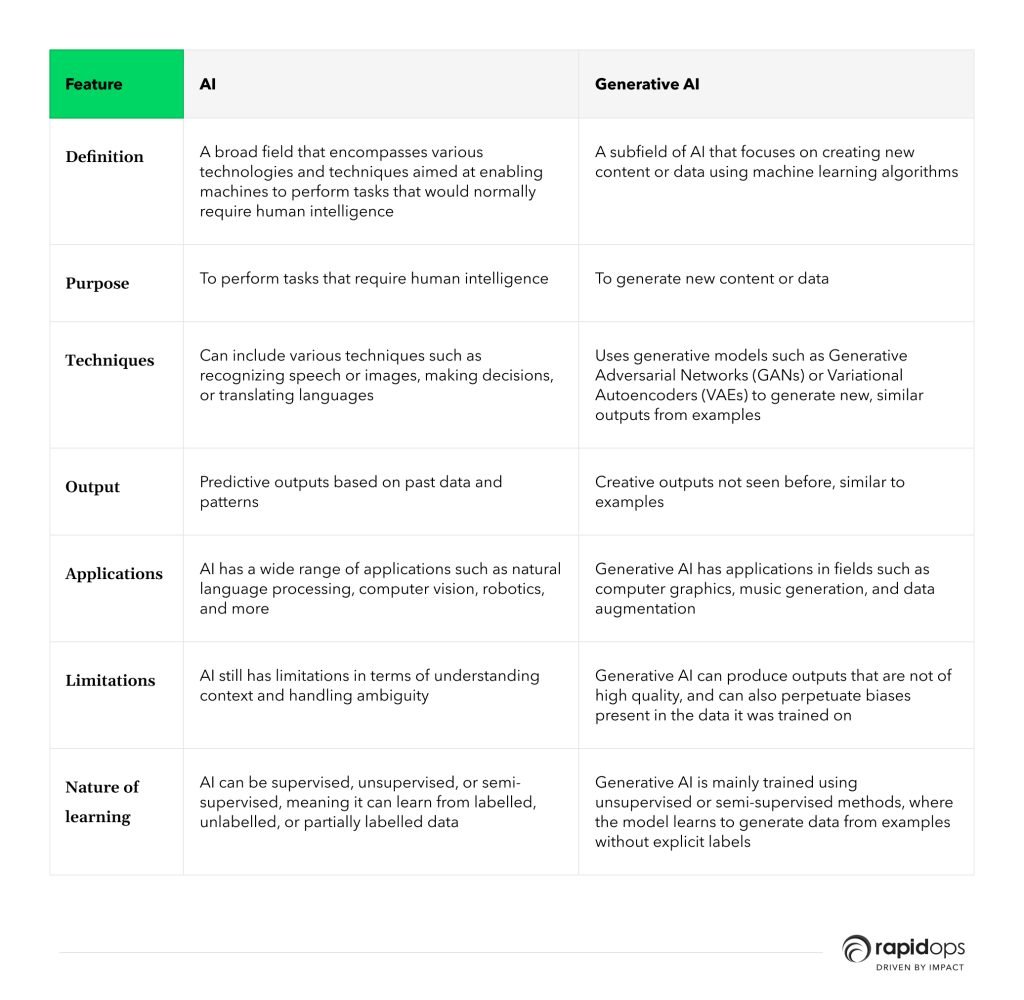
What’s the difference between generative AI and generative design?
Generative AI is a subfield of Artificial Intelligence (AI) that focuses on generating new content, such as text, images, or music, using machine learning models trained on large datasets.
The goal is to enable AI systems to generate new outputs similar in style or content to the training data but not necessarily identical.
On the other hand, generative design is a design methodology that uses algorithms and computational tools to generate design options based on specified design criteria and constraints.
The goal is to allow designers to quickly explore many design alternatives and find the best solution for a particular design problem in a fraction of the time it would take to explore all possibilities manually.
In generative design, the designer provides the inputs (criteria, constraints), and the software generates the outputs (design alternatives).
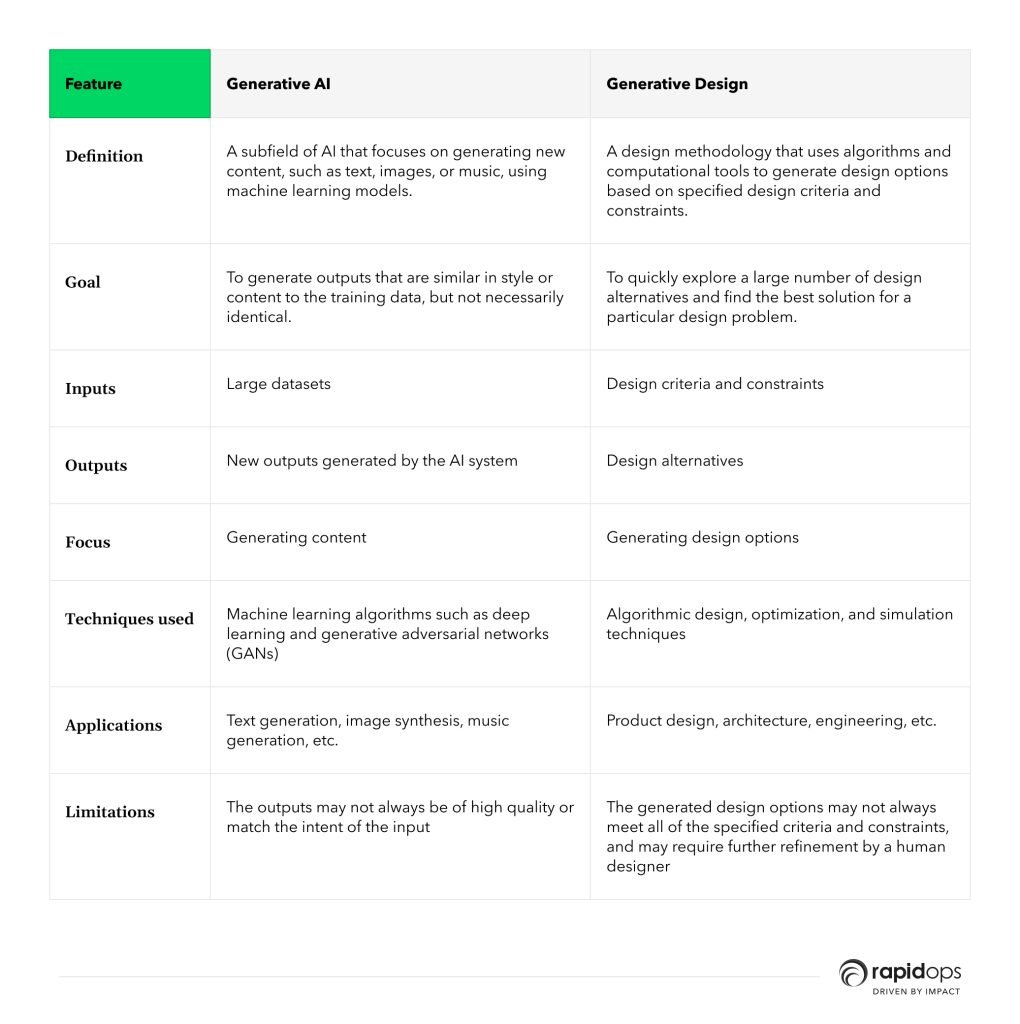
Generative AI startup ecosystem
The generative AI startup ecosystem is a rapidly growing and dynamic field, with many companies working on various products and applications. Here are a few of the areas in which generative AI startups are focusing:
1. Content creation
Several startups are using generative AI to automate the creation of various forms of content, such as images, videos, music, and text.
For example, some startups use GANs to generate realistic images of people, animals, and landscapes or use transformer-based models to generate accurate product descriptions.
2. Design and prototyping
Some startups use generative AI to streamline the design and prototyping process.
For example, by generating 3D models of products or buildings or automatically developing mock-ups and prototypes of user interfaces.
3. Personalization
Generative AI is also used to personalize individual users' products and experiences.
For example, some startups use generative AI to create personalized nutrition and workout plans or use VAEs to generate personalized fashion recommendations.
Overall, the productive AI startup ecosystem is a highly dynamic and exciting area with great potential for innovation and impact.
There are many giants in the AI tech space: Google, Amazon, Microsoft, IBM, Facebook, and the list goes on. But AI-centric startups are giving them a big-time fight with their innovations.
Recently added unicorn start-ups in AI space
AI has been a hot topic in the tech industry for several years, and many startups have emerged with innovative solutions that use AI to solve various problems.
Among these startups, a few have recently achieved "unicorn" status, meaning they have been valued at over $1 billion.
Here are some of the most innovative and upgraded startups that industries look up to for more revolutionary services and products:
1. UiPath (Robotic Process Automation)
UiPath is a leading provider of Robotic Process Automation (RPA) software, which automates repetitive workplace tasks, freeing human employees to focus on higher-value work.
Their platform uses computer vision and natural language processing (NLP) to enable robots to understand and interact with human users and systems.
While UiPath is primarily known for its robotic process automation (RPA) software, they have also introduced an AI Fabric product, which enables users to integrate and deploy AI models within their RPA workflows quickly.
2. Anodot (Real-time AI Analytics)
Anodot provides real-time analytics solutions using AI and machine learning to detect anomalies in large datasets automatically.
Their platform can analyze vast amounts of data and alert users to important events or changes in real time, enabling businesses to make faster, data-driven decisions.
3. H20.ai (Open-source Machine Learning Platform)
H20.ai is an open-source machine-learning platform that allows developers and data scientists to build and deploy machine-learning models at scale.
The platform supports various popular programming languages and includes advanced algorithms and tools for model training, evaluation, and deployment.
H20.ai has launched several generative AI products, including H2O-3, an open-source platform for building and deploying machine learning models, and H2O Driverless AI.
This proprietary platform automates many of the steps in the machine learning process, from data preparation to model deployment.
4. Appen (Data Annotation for AI)
Appen is a global leader in data annotation and collection for AI and machine learning.
Their platform provides access to a worldwide crowd of over one million annotators and data scientists who can help companies annotate and label data for use in training machine learning models.
5. C3.ai (Enterprise AI Software)
C3.ai provides enterprise-scale AI software solutions that enable businesses to harness the power of AI and machine learning for various applications, including predictive maintenance, fraud detection, and supply chain optimization.
Their platform includes pre-built AI models and tools for data integration and analytics.
C3.ai offers a variety of AI-powered products for enterprise customers, including predictive maintenance, fraud detection, and supply chain optimization solutions.
These products use generative AI techniques to analyze large datasets and identify real-time patterns and anomalies.
6. Dataminr (Advanced Alerting for Real-time Events)
Dataminr provides real-time alerts for breaking news and events by analyzing data from social media, news sources, and other public data sources.
Their platform uses machine learning to filter and classify data and deliver relevant alerts to users in real time.
Dataminr has developed a generative AI product that uses natural language processing (NLP) and machine learning to analyze vast amounts of data from social media, news sources, and other public data sources and identify breaking news and events in real time.
Their platform also includes various customization and filtering options to help users tailor the alerts to their specific needs.
7. Vicarious (Artificial General Intelligence)
Vicarious is a research company focused on developing artificial general intelligence (AGI), a form of AI that can learn and reason across various domains and tasks.
Their approach combines advances in neuroscience, cognitive science, and machine learning to create systems that can mimic human intelligence.
Vicarious is focused on developing artificial general intelligence (AGI), potentially leading to various generative AI applications.
While they have not yet released any commercial products, they have published several research papers outlining their progress in developing AGI models.
8. SigOpt (Optimization Platform for Machine Learning)
SigOpt provides an optimization platform for machine learning models that helps data scientists and engineers find their models' best configurations and hyperparameters.
Their platform uses advanced optimization algorithms and machine learning techniques to explore large parameter spaces and find the best solutions.
SigOpt offers an optimization platform for machine learning models that can be used to generate more efficient and effective models.
Their platform uses generative AI techniques, such as Bayesian optimization, to automatically tune model parameters and hyperparameters, reducing the need for manual trial and error.
9. Nutonomy (Autonomous Vehicle Technology)
Nutonomy is a leading autonomous vehicle technology provider, including software and hardware solutions for self-driving cars.
Their platform includes advanced sensors and machine learning algorithms that enable vehicles to navigate complex environments and make safe and reliable driving decisions.
Influence of generative AI in various industries
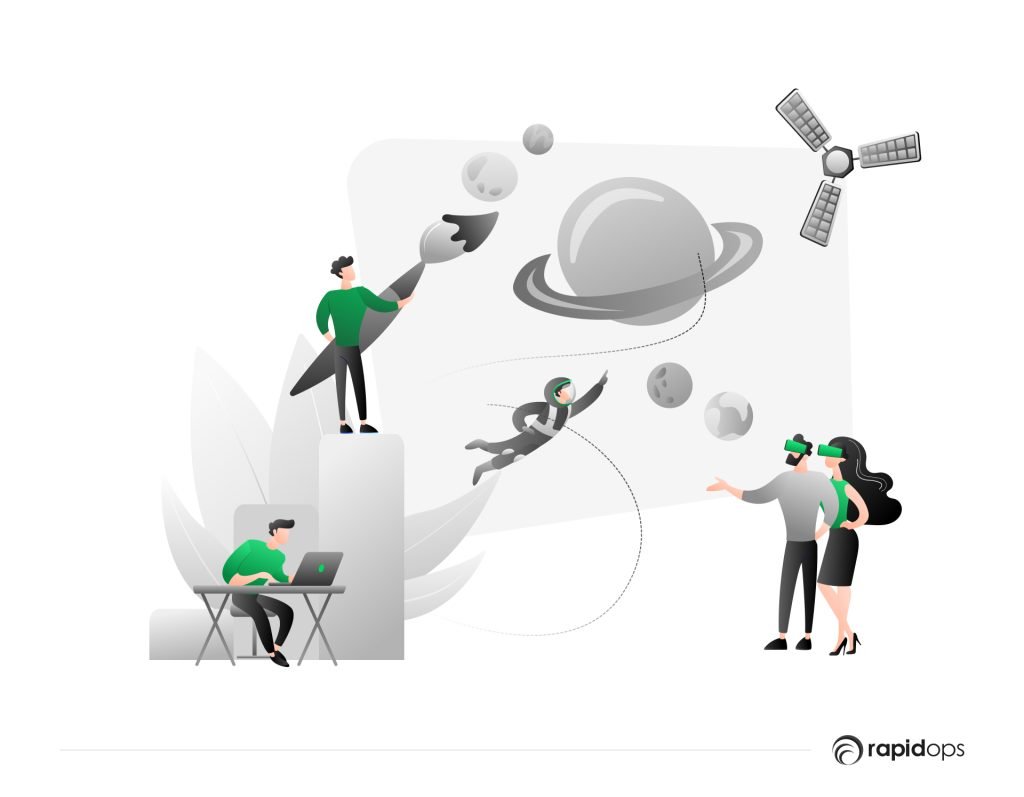
According to Quidgest, By 2025, 90% of the material in quarterly reports will be synthetically generated. That means no industry will be deprived of the innovation we are seeing and using today in next 2 years.
Let's see how Generative AI has already transformed some crucial and quintessential tasks in various industries:
Entertainment industry
Here are some ways in which generative AI is being used in the entertainment industry:
1. Netflix
Netflix has been using generative AI to personalize their content recommendations for viewers. By analyzing viewer behaviour, such as what they watch, when they watch it, and how often, the AI can recommend content that the viewer is more likely to enjoy.
In addition, Netflix has used AI to create personalized trailers for their original movies and TV shows.
2. Weta Digital
Weta Digital, a visual effects company based in New Zealand, used generative AI to create the character of Gollum in the Lord of the Rings films.
By using motion capture and AI algorithms to map actor Andy Serkis' movements and facial expressions onto the computer-generated character, Weta created a realistic and memorable character that helped bring the story to life.
3. Lucasfilm
Lucasfilm has used generative AI to create realistic computer-generated characters and environments in their Star Wars films.
For example, in Rogue One: A Star Wars Story, the character of Grand Moff Tarkin was brought back to life using a combination of motion capture and AI algorithms to recreate actor Peter Cushing's performance.
4. OpenAI
OpenAI, a research organization focused on artificial intelligence, has developed a generative language model GPT-3 that can create realistic human-like text.
This can revolutionize how screenplays, novels, and other forms of entertainment are written.
5. AIVA
AIVA is an AI-based music composition software that can create original music pieces. The software has been used to create music for films, commercials, and other forms of entertainment.
Here are some examples of companies that are enabling the use of generative AI in the entertainment sector:
6. Amper Music
Amper Music is a platform that uses generative AI to create custom music tracks for use in films, videos, and other media.
7. Lumen5
Lumen5 is a video creation platform that uses generative AI to help users create engaging videos from text-based content.
8. Jukin Media
Jukin Media is a media company that uses generative AI to identify and license user-generated video content for use in commercials, films, and other media.
9. Artomatix
Artomatix is a platform that uses generative AI to help artists and designers create photorealistic 3D models and textures for use in video games and other applications.
These are just a few examples of companies that are using generative AI in the entertainment sector.
Healthcare industry
These are several examples of how generative AI is being used in the healthcare industry:
1. Medical Imaging
Generative AI has been used to analyze medical images, such as X-rays, CT scans, and MRIs, to identify potential health issues.
For example, a generative AI model developed by Stanford University researchers could detect and classify skin cancer with a high level of accuracy.
2. Drug Discovery
Generative AI is used to identify new drug candidates by predicting how molecules interact with biological targets.
For example, a team of researchers from the University of Toronto used a generative AI model to identify a potential new drug candidate for Ebola.
3. Personalized Treatment
Generative AI can analyze large amounts of patient data, such as medical records and genetic information, to identify personalized treatment options.
For example, Paige.ai has developed a generative AI model that analyzes medical images to provide personalized treatment recommendations for cancer patients.
4. Medical Diagnostics
Generative AI is used to develop diagnostic tools that can identify potential health issues early.
For example, a team of researchers from the University of California, Los Angeles, used a generative AI model to analyze blood samples and identify biomarkers that could predict the onset of Alzheimer's disease.
5. Surgery
Generative AI can help surgeons plan and perform surgeries more accurately and with less risk to patients.
For example, Viz.ai has developed a generative AI tool that analyzes medical images to help doctors quickly identify and treat strokes.
Overall, generative AI has the potential to significantly improve the speed, accuracy, and effectiveness of healthcare delivery, leading to better patient outcomes and improved quality of care.
Here are some examples of companies that are enabling the use of generative AI in the healthcare sector:
6. Paige.AI
As mentioned earlier, Paige.AI has developed a generative AI model that analyzes medical images to provide personalized treatment recommendations for cancer patients.
7. PathAI
PathAI uses generative AI to assist pathologists in diagnosing cancer and other diseases from tissue samples.
8. IBM Watson Health
IBM Watson Health is a division of IBM that is focused on using AI to improve health outcomes.
The company has developed several generative AI models in the healthcare sector, such as a model that analyzes medical images to detect breast cancer.
9. Viz.ai
Viz.ai has developed a generative AI tool that analyzes medical images to help doctors quickly identify and treat strokes.
10. BlackThorn Therapeutics
BlackThorn Therapeutics uses generative AI to develop new treatments for neurological and psychiatric disorders.
11. Recursion Pharmaceuticals
Recursion Pharmaceuticals uses generative AI to identify new drug candidates for various diseases.
Finance industry
Here are some specific examples of how generative AI has played a vital role in the finance industry:
1. Fraud detection
Generative AI is used to detect fraud in financial transactions.
For example, JP Morgan Chase uses machine learning algorithms to detect fraudulent activity in real time, and the system can identify potential fraud with up to 90% accuracy.
2. Trading strategies
Hedge funds and other financial institutions are using machine learning algorithms to analyze large amounts of financial data and identify patterns that can be used to make more informed investment decisions.
3. Risk management
Generative AI is used to assess financial industry risk.
For example, Goldman Sachs uses machine learning algorithms to analyze market data and identify potential threats. The system can do this much more quickly and accurately than a human analyst.
4. Customer service
Generative AI improves customer service in the financial industry.
For example, chatbots that use natural language processing and generative AI can provide customers with quick and accurate responses to their questions.
5. Credit scoring
ZestFinance uses machine learning algorithms to analyze non-traditional data sources, such as social media and mobile phone usage. It is used to develop more accurate credit scores for people who may not have a traditional credit history.
Here are some companies that are enabling the use of generative AI in the finance sector:
6. IBM
IBM's Watson platform offers a suite of AI-powered tools for the finance industry, including solutions for risk management, fraud detection, and trading.
7. BlackRock
BlackRock is a global investment management company that uses machine learning and other AI technologies to inform investment decisions and improve risk management.
8. Numerai
Numerai is a hedge fund that uses generative AI to develop investment strategies. The company's platform enables data scientists worldwide to build machine-learning models that inform investment decisions.
9. ZestFinance
ZestFinance is a company that uses machine learning and generative AI to develop credit-scoring models.
The company's algorithms analyze various data sources to build more accurate credit scores for people with different credit histories.
10. Ayasdi
Ayasdi is a company that uses machine learning and other AI technologies to enable financial institutions to automate various processes, such as risk management and fraud detection.
Closing lines
"The development of full artificial intelligence could spell the end of the human race." - Stephen Hawking, Physicist and Cosmologist.
It might be true because we all are yet to figure out this new, nice and never-seen-before set of tools that we didn't even realize and got the hang of before we even knew it!
Generative AI is rapidly transforming how we approach tasks ranging from art and music to healthcare and finance.
The way our habits changed from opening newspapers to our phones, with AI coming into our lives, we are getting used to wishing Alexa good morning while commanding it to play our workout music.
So, if you are waiting for the wind to pass, our suggestion would rather be to learn to sail through because it is not going anywhere, just the way Internet didn't stop after WWW discovery!

Niyati Madhvani
A flamboyant, hazel-eyed lady, Niyati loves learning new dynamics around marketing and sales. She specializes in building relationships with people through her conversational and writing skills. When she is not thinking about the next content campaign, you'll find her traveling and dwelling in books of any genre!
What’s Inside
- What is Generative AI?
- Intelligent models that Generative AI uses
- Other algorithms for building Generative AI
- What’s the difference between AI and Generative AI?
- What’s the difference between generative AI and generative design?
- Generative AI startup ecosystem
- Recently added unicorn start-ups in AI space
- Influence of generative AI in various industries
- Closing lines

Let’s build the next big thing!
Share your ideas and vision with us to explore your digital opportunities
Similar Stories
- AI
- 4 Mins
- September 2022

- AI
- 7 Mins
- April 2023


Receive articles like this in your mailbox
Sign up to get weekly insights & inspiration in your inbox.
